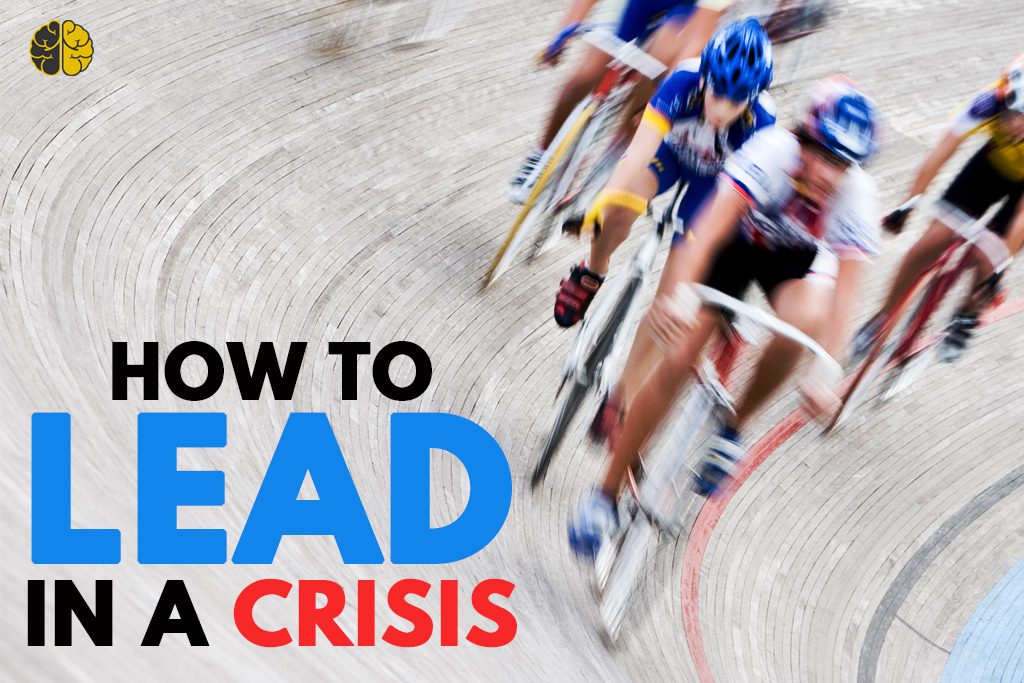“Take every emotion you have, turn them all on at once, and crank them up to 10. That’s how it feels.”
My friend Ray described his first MMA fight with those words. And I didn’t really get it—until now.
The pressure is on.
Gym owners are under fire. The entire business has changed. It’s exciting and scary. We’re going back and forth between highs and lows—sometimes in the same day, sometimes in the same hour.
“Everybody has a plan until they get punched in the mouth.” —Mike Tyson
A month ago, we thought the future was predictable. Today, we know it’s not.
If you’re a Two-Brain gym, you pivoted early. You’re probably holding a 90 percent plus revenue retention rate. That’s amazing, but you’re still facing the unknown future.
And the worst part? Everyone is watching you.
Your clients are watching.
Your staff is watching.
Your family is watching.
Even other gym owners are watching—and you know you shouldn’t care, but you do.
Being a foot soldier in a conflict is tough enough. Being a leader is 100 times harder.
Like you, I’ve been leaning on my mentors more than ever before. I was talking with Todd Herman in early April, and he said, “You’re doing a great job with the CALM model.”
“What’s the CALM model?” I asked.
What he gave me next was one of those little pieces of genius that makes you think, “Oh, that’s obvious.” Real genius seems obvious in hindsight. But it makes all the difference when you need it most.
Let the CALM model guide your actions in the next 90 days.
CALM stands for clarity, assurance, leadership and movement.
Clarity
Be the filter. Don’t add to the noise. Tell people exactly what to do.
Instead of saying, “Here are five options for online training!” contact every client and say, “Here’s your plan for the next 30 days.”
Instead of saying to your staff, “Who wants to try online training?” say, “Here’s what we’re going to do. This might not be what you signed up for. You can opt out now. But if you turn up tomorrow, this is what you’ll be doing.”
Many newer leaders try to lead by consensus. I sure did. But in times of crisis, people look to their leader to make things black and white.
How I’m doing it: We’re publishing only strategies that can be backed with experience and data. I’m avoiding the temptation to share opinion. I just share facts. And as soon as we can prove that something works, I say, “Do this right now.”
Assurance
People need to believe in you. But they’re not naive.
The Stockdale paradox is the idea of hoping for the best but acknowledging and preparing for the worst.
It was made popular by Jim Collins’s book “Good to Great,” and it was inspired by Vice Admiral James Stockdale, a naval aviator who was awarded the Medal of Honor for leadership shown over more than seven years as a prisoner of war in Vietnam.
As a leader, you must be completely realistic about how dire your situation is but also maintain optimism about the future. And you must share those sentiments with your audience.
Every great speech by Winston Churchill followed the same template:
“Here’s how bad it is.”
“Here’s why we’re optimistic”.
Leadership: “Follow Me”
In times of crisis, people follow the leader who can make things simple.
Obviously, this power can be used for good or for evil.
Your job as a leader is to say, “Just keep doing this one thing and you’ll be OK.”
Remove complexity. Make your path easy to follow.
Then walk it: Model the behavior you want your audience to model.
If you want them to be optimistic, be optimistic. Go on camera looking fresh and positive. If you want them to feel like victims, go on camera looking tired and beaten.
The best fitness instructors online look like they’ve just won the lottery. The worst fitness instructors look like they need a shave—but they don’t look that way for long because they’re quickly buried by the great ones.
Everyone is looking for a model—someone he or she wants to be.
Be that person. Even if you don’t feel like it.
Movement
Colin Powell once said this from stage: “Never present a problem without a solution.”
I was in the audience. And he went on to list the country’s biggest problems—and potential solutions. I became an instant fan and remained so even through all the “weapons of mass destruction” fallout.
During a crisis, don’t stand still.
Get the answers fast. But if you don’t have the answers, show people that you’re working hard on the problem.
Bring in other experts. Summarize others’ knowledge. Update your audience as you learn.
For example, tell your clients, “We’re all used to human interaction. I want to make sure no one slips into depression while you’re isolated. So I’ve brought in an expert to help. On Saturday, Bonnie Skinner will be here to talk about managing isolation and creating structure in your life. On Sunday, local chef Steven Mills will be here live to help you make five meals out of one turkey.”
You don’t have to be the expert. But you have to be the channel for expertise.
Every year, authors sell hundreds of thousands of books about leadership. Thousands of speakers give seminars. Hundreds of experts sell courses.
But leadership comes down to two words: “Follow me.”
Following the CALM method makes it easier for people to follow you.

